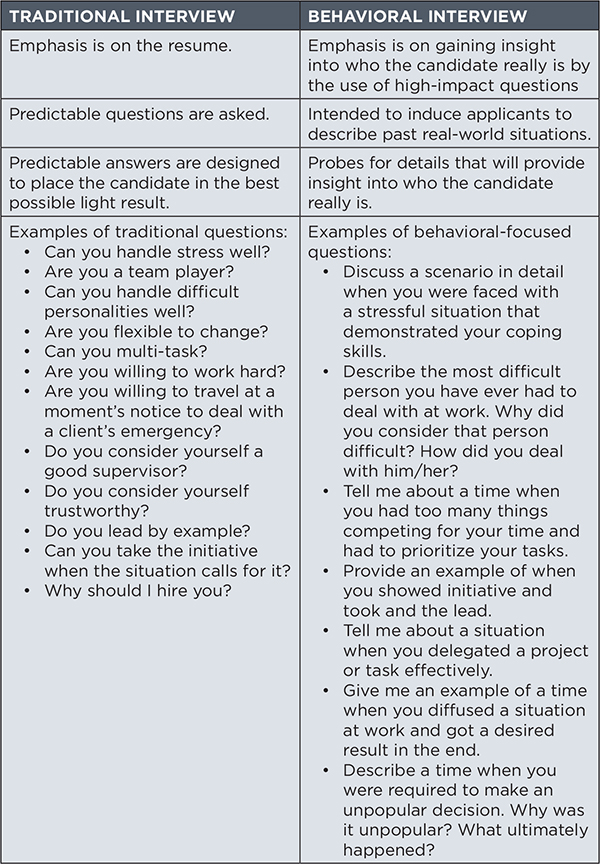 Once upon a time, employees who were dissatisfied with howmanagement treated them might respond by organizing, filing agrievance, or suing. If they were really frustrated, they mightrefuse to sign the warning notice or performance appraisal formthat was presented to them in protest.
Once upon a time, employees who were dissatisfied with howmanagement treated them might respond by organizing, filing agrievance, or suing. If they were really frustrated, they mightrefuse to sign the warning notice or performance appraisal formthat was presented to them in protest.
Nowadays it is not uncommon for disgruntled employees to pushthe boundaries of behavior much further, even to the point ofkilling supervisors or managers. From June 2015 through September2016 the following tragedies occurred:
Jason Yanko, 40, an operations manager in Texas wasshot several times by an employee he was in the process of firing.Investigators identified 25 spent shells at the scene. Yanko's bodywas found clutching the termination paperwork in his hands. Theemployee was later sentenced to life imprisonment for Yanko'smurder.
Ward R. Edwards, 49, a manager in Indiana, was killedin a conference room by an engineer who reported to him. Aftershooting Edwards, the man took his own life. As is usually thescenario with deadly violence, the incident threw the workplace,with a reported 1,100 workers, into chaos.
Andrew Little, 55, a supervisor at a landscapingcompany in Florida, was shot to death. The employee charged withLittle's murder reportedly felt he was being disrespected, was notbeing compensated fairly, and had prior run-ins with Little andothers, but mainly with Little. According to the police report, thesuspect ran to his vehicle after the shooting and retrieved abaseball bat before being arrested. While in jail awaiting trial onLittle's murder, he was charged with a second felony.
Air Force Lt. Col. William Schroeder, 39, commander ofthe 342nd Training Squadron in Texas, was murdered by a technicalsergeant who was facing discipline. As he struggled to gaincontrol over the shooter who was brandishing a glock, Schroedervaliantly warned others in the area to run. Bullets struckSchroeder in the arm and the head. The shooter then committedsuicide.
Mike Dawid, 35, a Texas manager, was killed by a formeremployee who returned to the workplace two weeks after histermination. Flying glass caused by shotgun blasts injuredemployees who were working in the area at the time of the shooting.The ex-employee then killed himself.
Sandra Cooley, 68, and James Zotter, 44,supervisors at a factory in Tennessee, were killed by RickySwafford, 45, a long-term employee who they had been meetingwith. Swafford became upset, left the meeting, and returned toshoot them before killing himself. Zotter had just been promoted tosupervisor a week before his murder.
Deadly Workplace Violence: A GrowingEpidemic
Workplace violence even occurs in the most peaceful ofcommunities. On February 25, 2016, a disgruntled worker equippedwith a rifle and a glock murdered three co-workers and shot 14 morepeople at Excel Industries in the small town of Hesston, Kan. Healso fired at a first responder but missed. The first responderfired back, killing the shooter and putting an end to thecarnage.
|While domestic violence is sometimes the underlying cause ofworkplace violence, it is most certainly not the only reason. Inthe Hesston tragedy, the shooter had been served with a domesticviolence restraining order shortly before he embarked on hiskilling spree.
|According to the Occupational Safety andHealth Administration (OSHA), “Homicide is currently thefourth-leading cause of fatal occupational injuries in the UnitedStates.” OSHA defines workplace violence as “…any act or threat ofphysical violence, harassment, intimidation, or other threateningdisruptive behavior that occurs at the work site. It ranges fromthreats and verbal abuse to physical assaults and evenhomicide.”
|OSHA estimates that approximately 2 million workersexperience workplace violence annually, but the number could beeven higher since many episodes go unreported.
||“It is impossible to overstate the costs of workplace violence,because a single incident can have tremendous repercussions,”states Angelo J. Gioia, an insurance executive with 40 yearsexpertise. Gioia is a nationally recognized professional liabilityexpert, publisher, author, and founder of the ProfessionalLiability Underwriting Society (PLUS) and AgentsofAmerica.org.
|Claims arising from workplace violence can involve a wide rangeof insurance policies including business interruption, property,employment practices, liability, director and officer omissions,health, life, worker's compensation, and more.
|Gioia explains that “while having insurance can address some ofthe economics relating to the loss, it is not the solution to theproblem at hand. Insurance companies can only react and, at best,can only provide a mechanism that provides both a defense andindemnity payment if there is a covered loss.”
|Strategies to Prevent Workplace Violence
Reducing the risk of workplace violence begins and ends in theworkplace with a company's leadership. “The first line of defenseis the employer who has a duty, financial responsibility and legalobligation in creating a safe work environment,” said Gioia.
|Employees who kill tend to do so because they feel powerless andneed to redistribute the balance of power. What can be done toprevent these scenarios?
|Felix P. Nater, CSC of Nater Associates, Ltd., is an authorityon workplace violence prevention and believes thatemployee-on-employee workplace violence can be anticipated if onefocuses on red flags and cues, and acts on them in a timely andproper manner rather than ignoring or missing them. “Merely havinga workplace policy is not good enough without a program supportingthe prevention effort. It has to be a living document thatemployees trust and have confidence in, not one that is used todiscipline as a reactionary tool,” opines Nater.
|Nater, a retired postal inspector, was one of several colleaguesresponsible for recommending, developing, and implementingprevention and security strategies in the postal service in the1980s and 1990s. He asserts that the appropriate perspective totake is not “if” it happens but “when” it happens. “If” implies areactionary response, versus “when,” which anticipates thepossibilities, says Nater.
|“Workplace violence prevention as it relates toemployee-on-employee threats is manageable and therefore ispreventable,” Nater explains. Employers have an opportunity toobserve behaviors in their employees before they erupt into verbalor physical hostility. Nater feels that a first line supervisorplays a key role in stopping workplace violence in its tracks.
|It is necessary for supervisors to act on cues of buddingviolence such as verbal abuse or bullying, which should not betolerated. It could also be early signs of future conflict, whichmay continue on to include more bullying and even physical abuse ifleft unaddressed. According to Nater, “Supervisors must not rush tojudgment. They must be impartial in identifying contributingfactors and root causes before applying the broad brush ofdiscipline. Leadership plays a key role in counseling and guidingemployees toward appropriate behavior.”
|Nater believes that supervisors must also be cognizant of whatis occurring in the workplace with their employees at all times.“In some cases, a frustrated employee may begin thinking aboutacting on rage. Supervisors, of course, cannot read every deviantthought an employee may have, but they can certainly take actionwhen they observe aggression or inappropriate behaviors,” statesNater.
||There are usually signs of problems beforehand and a situationakin to a rubber band being pulled and pulled until it finallysnaps. Part of the problem is a lack of appropriate training andsupervision to spot the red flags and cues.
|“We have fallen woefully short in this country becausesupervisors are in many cases promoted without appropriate trainingin how to be a supervisor of people. This includes recognizingwarning signs employees may be transmitting and then failing torespond swiftly and appropriately, and not being heldaccountable when they fail to do so,” Nater opines.
|When referring to this lack of training, Nater says, “It is onething to be a great salesperson or help desk specialist. Beingpromoted to a sales or help desk supervisor involves an entirelydifferent scenario and requires a different skill set where peoplemanagement is concerned.”
|One strategy that can be immensely helpful is what Nater calls arobust, agile, proactive (RAP) mindset that helps management avoidbeing caught by surprise by unacceptable actions. He also believesthe best way to manage today involves approaching employee safetyfrom a holistic perspective with what he calls “care and concern”for the workforce.
|There are many rewards for those who engage these skills. Oneincludes fostering an environment where employees will alertsupervisors to concerns about colleagues and changes in behavior orodd random acts because they trust the policy and believe in theprogram. However, some may be reluctant to report a colleague.
|“Before you can expect an employee to come forward and reporttroublesome behavior from a co-worker, there must be trust andconfidence that the information will be handled appropriately andresponsibly without fear of retaliation or disciplinary actionbefore resolution of the issue,” says Nater. A mishandled case canaffect the process indefinitely.
|Employees who observe a co-worker bullying someone else may fearexperiencing the same behavior if they report the bully.
|“The buck stops squarely at the first line supervisor's desk. Ifthe employee trusts the supervisor, he or she may not feel soapprehensive about dropping a dime. If the report results inretribution, the employee and all others around him or her willprobably not speak up again in the future,” says Nater.
|Avoid Zero-Tolerance Policies
It is important for all involved to recognize that bullying,harassment, assault, and worse happen with increasingly regularity.Connecting the dots is key to managing aggression, says Nater, whofeels that employers must take responsible action in providing asafe, secure, and productive workplace.
|“We do this by first creating appropriate policies, trainingsupervisors on what their role is and should be, enforcing existingpolicies fairly with an attempt to correct the situation reported,and keeping all those involved informed. In short, think programdevelopment and program management in reinforcing the long-termprevention effort,” says Nater.
|Nater does not advocate a “zero tolerance” policy, whichemphasizes discipline. It is too rigid and reactive and takes thefocus off of implementing strategies to develop appropriatebehaviors within the workforce.
|Janette Levey Frisch, Esq., an attorney with more than 20 yearsof legal experience and the founder of the EmpLAWyerologist firmagrees zero tolerance is not the answer and questions itseffectiveness.
|“Zero-tolerance policies usually mean you want to stop somethingthat has already occurred and that you think is very bad, and wantto take a public stand that something is being done to address it,”she explains. This is simply not the best position to take.
|While zero tolerance is not the answer, she does believe thereis a better approach. “Employers should consider proactive policiesand solutions rather than rigid, reactive, or knee-jerk responsesto employee conduct,” she advises.
|The Employer's Legal Duty to Provide a SafeWorkplace
In accordance with governing federal law, employees are entitledto safe working conditions under Section 5 of the federalOccupational Safety and Health Act (the OSH Act) of 1970. OSHA ischarged with various responsibilities including administering andenforcing the OSH Act and engaging in educational activitiesintended to promote employee health and safety goals.
|Stephanie Ross, 24, was a social service coordinator employed byIntegra Health Management (“Integra”) in Florida. Part of herjob duties required Ross to make home visits to her employer'sclients, including one severely mentally ill man who had a violentcriminal history. After a few meetings, Ross disclosed in herwritten case records that she felt uncomfortable being alone withhim. In December 2012, the man stabbed Ross to death outsideof his home.
|OSHA conducted an investigation into Ross's death and issued twoserious citations and assessed penalties totaling $10,500 againstIntegra for failing to report Ross's death to OSHA and for failingto protect employees from workplace violencehazards. (Employers are required to report any on-the-jobfatalities to OSHA within eight hours of learning of the event.) Ajudge for the Occupational Safety and Health Review Commissionreviewed the case and agreed with OSHA's investigators that Integrafailed to protect Ross.
|Health care workers are particularly susceptible to workplaceviolence. Following Ross's murder, OSHA announced it wouldstep up its inspection and enforcement activities in the medicalindustry to focus on workplace violence amongst other safety andhealth risks.
|Stuart M. Silverman, Esq. of Stuart M. Silverman, P.A., saysthere are several theories “a claimant could bring that couldeasily trigger coverage and a duty to defend” on the employer'spart following an episode of workplace violence. These includenegligent hiring and negligent supervision causes of action. Thereare key differences between them.
|“Negligent hiring focuses on the employer's duties prior to thetime the individual begins working, whereas negligent supervisionfocuses on actions of the employer following any decision to hire,”he explains. There are ways to mitigate the chances of these typesof lawsuits.
|Silverman believes the greatest opportunities for an employer toreduce the risk of workplace violence and any subsequent litigationoccurs at the pre-employment and termination stages.Implementing the appropriate strategies lessens the chances of bothviolence and litigation says Silverman.
|“Employers must be careful what dangers they let in thedoor to their employee family and how they get that danger out thedoor without causing harm to the family,” he adds. “It is mucheasier to simply not introduce a future bully into the equation.Use behavioral-based interviewing techniques—a hiring process thathelps employers identify applicants who are potential futurebullies during the recruitment stage. Bypass that person. Selectsomeone else or go back to the drawing board and start again.”
|Behavioral-based interviewing is a powerful tool that can helpemployers identify the candidate who possesses the appropriateskills, knowledge, and behaviors required to perform the job. “Thismode of interviewing is very different and more effective thantraditional interviewing techniques,” Silverman explains.
|As an added bonus, behavioral-based interviewing is bydefinition legally compliant because it focuses exclusively onasking questions dealing with the core technical skills, knowledge,and experiences, as well as desired behaviors to perform the job.It does not delve into asking questions that focus on unnecessary,irrelevant, and illegal matters.
|Terminations
For terminations, there are many steps employers can take toreduce the risk of employment practice liability claims andworkplace violence such as:
|Allow the employee to save face by scheduling the terminationmeeting at a place far from prying co-workers' eyes andears. Avoid embarrassing the employee, and do not publiclyterminate the employee.
|Designate a person with strong human relations skills to conductthe employer's terminations. State the facts carefully, and avoidarguing with the person about the merits of thetermination.
|Have a plan in place regarding severance or benefits. Providingthe employee's final paycheck with some severance can help reducethe potential for violence.
|The more actions the employer takes to anticipate any problemsbefore they fester and erupt into violence, the better.
|“It is amazing that companies focus so much on thequestions they cannot ask in the pre-hire stage and little to nofocus on the termination stage. These days, the life you savemay very well be your own or that of one of your valuedcolleagues,” Silverman concludes.
|Keys to Hiring the Right Talent
The aftermath in the wake of deadly workplace violence can beextreme. In addition to the loss of life and the physical andpsychological trauma it causes, there are the high costs associatedwith defending any resulting lawsuits, extreme disruption to theworkplace, negative press, loss of goodwill, employee turnover,decreased employee morale, and more.
|Minimizing the risk of workplace violence begins at the start ofthe working relationship. Take the time to conduct an effectiveinterview. Do not ask questions on the spot. Developbehavioral-based interviewing questions. This method is based onthe concept that the way an applicant behaved under similarcircumstances in the past is a good indicator as to how he or shewill behave in future.
|The following grid highlights the differences between atraditional versus behavioral based interviewing line ofquestioning.
|
————————–
|Kathleen M. Bonczyk is an attorney, formerhuman resources executive, activist, and founder of the WorkplaceViolence Prevention Institute. To learn more visit www.kathleenbonczykesq.com.
Complete your profile to continue reading and get FREE access to Treasury & Risk, part of your ALM digital membership.
Your access to unlimited Treasury & Risk content isn’t changing.
Once you are an ALM digital member, you’ll receive:
- Critical Treasury & Risk information including in-depth analysis of treasury and finance best practices, case studies with corporate innovators, informative newsletters, educational webcasts and videos, and resources from industry leaders.
- Exclusive discounts on ALM and Treasury & Risk events.
- Access to other award-winning ALM websites including PropertyCasualty360.com and Law.com.
*May exclude premium content
Already have an account? Sign In
© 2024 ALM Global, LLC, All Rights Reserved. Request academic re-use from www.copyright.com. All other uses, submit a request to [email protected]. For more information visit Asset & Logo Licensing.







